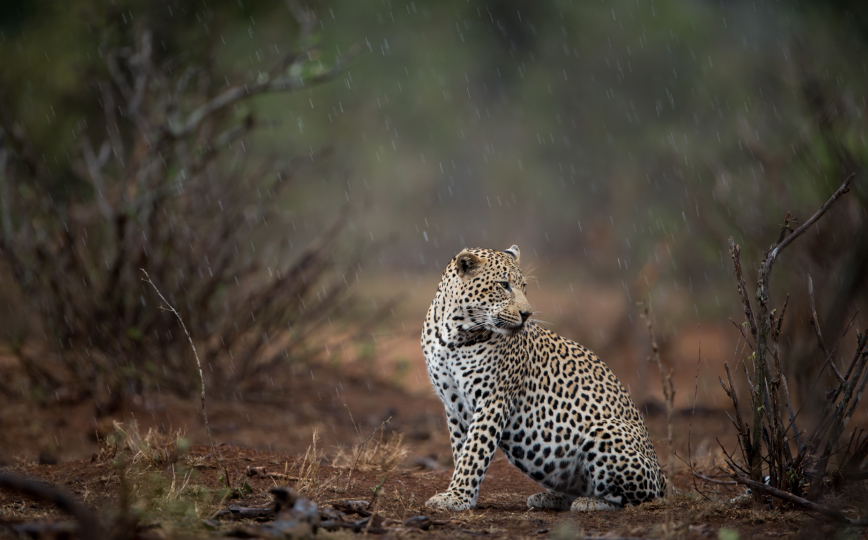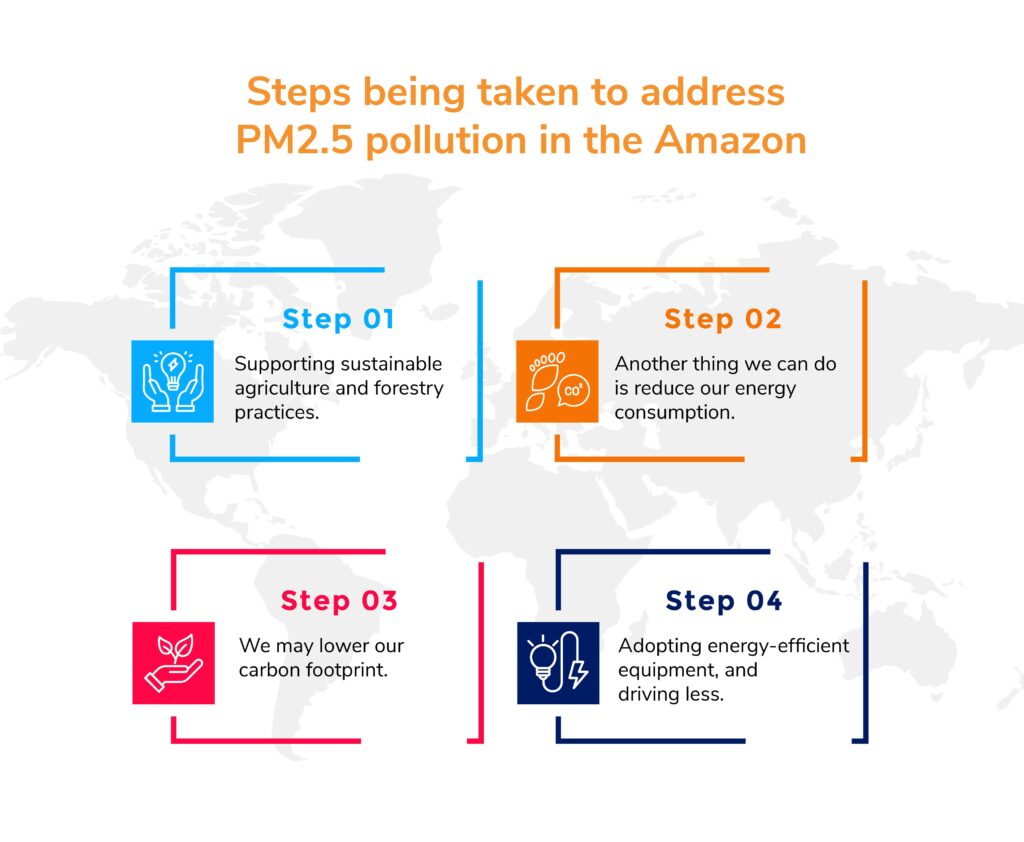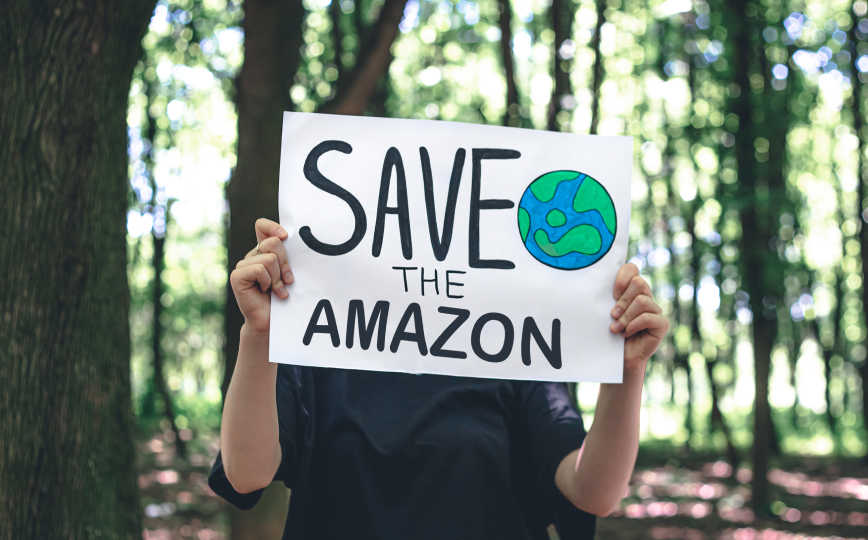The Amazon rainforest is an ecological gem, home to a diverse range of vegetation and fauna. PM2.5 pollution, a type of air pollution that can harm both human and animal health, is increasingly endangering the Amazon. In this blog post, we’ll look at the problem of PM2.5 pollution in the Amazon and how it affects the region’s fauna. We will examine real-life case studies of damaged species, analyze the long-term effects on the environment, and review the efforts being made to address this urgent problem. Furthermore, we will empower folks with practical tips and solutions to help avoid PM2.5 pollution in the Amazon and maintain its unique species. Join us as we investigate this vital environmental issue and discover more.
Introduction to the issue
Hidden danger lurks in the Amazon rainforest, where wildlife is being threatened by PM2.5 pollution. These tiny particles, no bigger than a speck of dust, may wreak havoc on both animals’ and humans’ lungs and hearts. The biggest causes of pollution are forest fires, agricultural burning, and industrial operations, and the pollution spreads hundreds of miles and impacts species far beyond its source.
Forest fires, agricultural burning, and industrial activities all contribute to harmful levels of PM2.5 pollution in the Amazon. These flames are getting more common and deadly as climate change and deforestation intensify, posing an increasing hazard to species hundreds of miles away.
The impact of PM2.5 pollution on Amazonian wildlife
PM2.5 pollution is harming Amazonian biodiversity. A study found that howler monkeys exposed to PM2.5 pollution from wildfire smoke had a 25% lower survival rate due to respiratory issues and impaired immunity, rendering them more susceptible to disease.
Furthermore, researchers have discovered that PM2.5 pollution from agricultural burning reduces the reproductive efficiency of great otters by inducing inflammation and damage to their reproductive organs. This results in decreased fertility rates and fewer offspring.
Researchers have found that PM2.5 pollution influences the behavior of Amazonian birds. One study observed reduced vocalization and activity levels, which could affect communication and mating ability.
Case studies of wildlife affected by PM2.5 pollution in the Amazon

The harpy eagle population has declined, indicating ecosystem health issues. Researchers attribute this decline to PM2.5 pollution in the Amazon. This apex predator has declined by more than half in recent years, owing mostly to habitat degradation, hunting, and pollution.
PM2.5 pollution is a major contributor to the extinction of the Amazon’s unique pink river dolphins. Because of their slow reproduction rate and lengthy lifetime, these dolphins are extremely vulnerable to the detrimental impacts of pollution. Studies have linked PM2.5 pollution to respiratory problems, skin rashes, and other health issues in animals.
Researchers have also observed these health issues in these beloved creatures. The reduction of the pink river dolphin species is a clear reminder of the Amazon’s PM2.5 pollution problem. It highlights the critical need to address this issue.
The long-term effects of PM2.5 pollution on Amazonian ecosystems
The Amazon rainforest is home to a diverse range of flora and wildlife, but PM2.5 pollution is endangering this delicate balance. The long-term impacts of PM2.5 pollution are still being explored, but the implications are serious. Pollution from PM2.5 can change the composition of soil and water, affecting the plants and animals that rely on them. This, in turn, can restrict the availability of food supplies, harm crops and forests, and exacerbate the problem. We must act now to minimise PM2.5 pollution in the Amazon and protect this beautiful ecosystem.
PM2.5 pollution also contributes to climate change. The most significant contributor to climate change is black carbon, which is a component of particle pollution. This might exacerbate the damage to the Amazon rainforest, which is already under threat from deforestation and human-caused activities.
Steps being taken to address the issue
Efforts are ongoing to combat PM2.5 pollution in the Amazon, but more action is required. The Brazilian govt. has implemented measures aimed at reducing deforestation and encouraging the use of renewable energy sources. Furthermore, international organizations are providing financial assistance and assistance to boost conservation efforts.

It is not only the responsibility of organisations and governments to prevent PM2.5 pollution in the Amazon. We can all do our part as individuals to make a difference.
- Supporting sustainable agriculture and forestry practices is one way to help. This entails selecting ecologically friendly products and avoiding those that contribute to deforestation and land damage.
- Another thing we can do is reduce our energy consumption.
- We may lower our carbon footprint and contribute to a cleaner world by turning off lights and appliances when not in use.
- Adopting energy-efficient equipment, and driving less.
Conclusion and call to action to protect Amazonian wildlife from PM2.5 pollution
The Amazon rainforest in Brazil is famous for its diverse ecology and is home to numerous flora and fauna species. This essential ecology, however, is under a new threat: PM2.5 pollution. Human activities such as industrial processes, vehicles, and biomass burning generate this fine particulate pollution.
PM2.5 pollution has a significant impact on the Amazon. Animal studies have indicated that PM2.5 exposure can result in impaired lung function, cardio vascular issues, and even early mortality. It can also lead to reproductive issues, behavioral changes, and a reduction in population size. This is concerning because the Amazon rainforest is home to some of the world’s most distinctive and endangered species.

Fortunately, action is being taken to address the problem of PM2.5 pollution in the Amazon. Governments and non-governmental organizations (NGOs) are collaborating to monitor air quality and implement sustainable pollution-reduction methods. Some countries, for example, are encouraging the use of sustainable energy sources such as solar and wind power.
People can also play an important role in mitigating PM2.5 pollution. Simple actions like driving less, saving energy, and appropriately recycling waste can all aid in lowering the quantity of PM2.5 produced. We can help to preserve the Amazon rainforest and conserve its biodiversity by being aware of our activities and taking full responsibility for it.
To summarize, PM2.5 pollution is an increasing hazard to Amazon and Amazonian species and ecosystems, and it is critical that we solve this issue. Governments, non-governmental organizations, and individuals must collaborate to minimize particulate matter emissions and maintain this vital ecological balance for generations to come. We can make a great difference in conserving the Amazon rainforest and its rich animals by taking tiny measures in our daily lives.